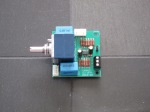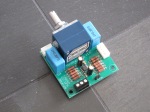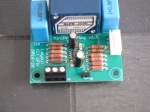After a longer-than-expected delay in shipping, I received some boards. Among them was the revised version of my Pascal adapter board, so after a quick check that it still works, time to release it into the wild… 🙂
Update 18th July 2022: A reader was kind enough to point out that there are actually two versions of the “universal” Pascal 26 pin I/O interface. There is one for the L-Pro (that I was looking at) and one for the S-Pro (which I didn’t have access to previously)
Basically the RX programming resistor is not used on the S-Pro modules and instead pin 14 can be used to put the module into a lower voltage mode suitable for running the S-Pro module in BTL with a 4-ohm load.
The download file has now been updated so there are now two versions of the adapter-board with some minor tweaks for each module type. If you have been using the “old” version of the board with the S-Pro modules then don’t worry. If you want to be sure then remove the RX resistor by cutting it off the board, but if your amp already works then it is unlikely to make a big difference.
I’ve also included some additional information in the file that I did not have access to before so you can see what the differences are (I wouldn’t normally, but this is pretty annoying so I’ll make an exception…).
Update 30th August 2022: Another reader sent me the pinout for the T-Pro modules and we’re now up to three versions of the same “standard” interface…
The T-Pro and S-Pro interfaces are very close, except that pins 14 and 15 on the T-Pro are reserved for internal use. If you have boards already, don’t mount or cut off the RX resistor. If you do not have boards already, use the S-Pro version and don’t connect anything to pins 14 and 15.
Update 13th November 2022: So, the saga of the Pascal-modules and the documentation continues. A reader pointed out to me that the input of the Pascal-modules isn’t actually a balanced interface, but merely has a split of different grounds broken out onto the connector. After reading the datasheets very carefully again, this seems to be correct and I just missed that.
The adapter boards below are still usable, but basically the modules have two SE-inputs and you’ll not be able to run a true balanced signal from a preamp unless you a) use the modules in BTL-mode or b) add a way to convert between BAL and SE in front of these modules. In this regard, the configuration is exactly the same as the ICEpower ASX-series. See further comments below.
Read more of this post


